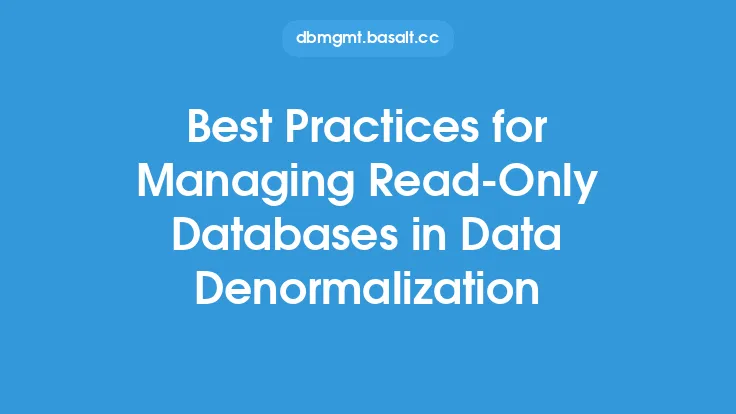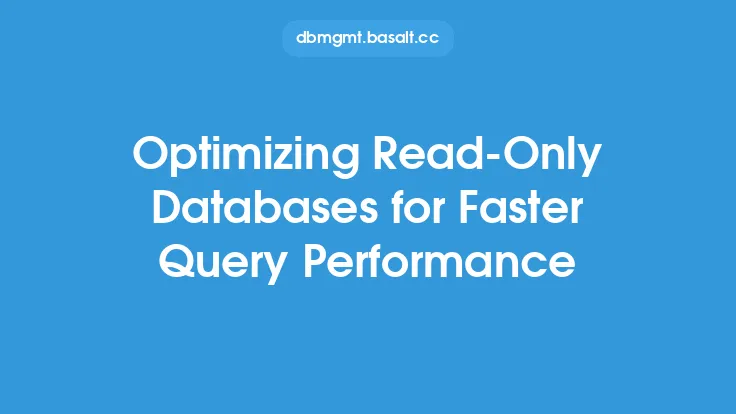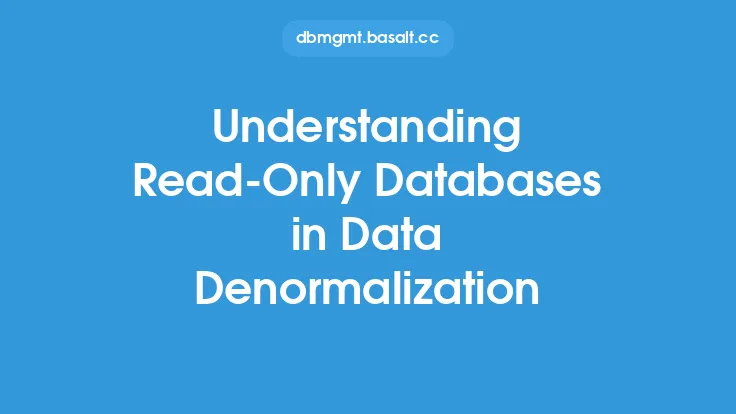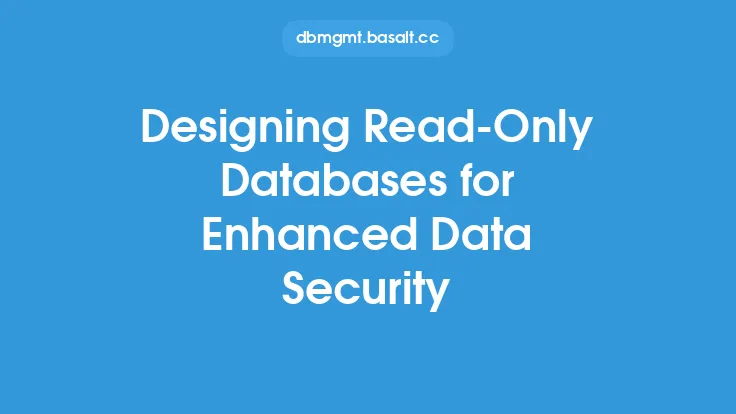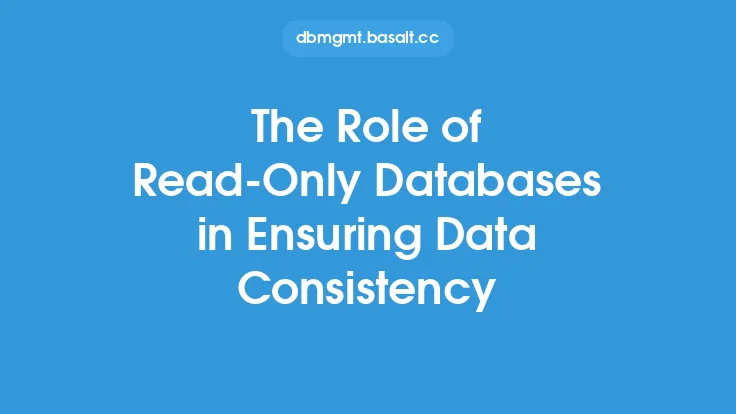In the realm of data management, complexity is a recurring challenge that organizations face. As the volume and variety of data continue to grow, managing and making sense of this data becomes increasingly difficult. One approach to simplifying data complexity is through the use of read-only databases. A read-only database is a type of database that allows data to be retrieved but not modified. This approach can be particularly useful in scenarios where data needs to be preserved in its original form, such as in historical records or compliance-related data.
Introduction to Read-Only Databases
Read-only databases are designed to provide a simplified and controlled environment for data access. By restricting modifications to the data, read-only databases ensure that the integrity of the data is maintained. This is particularly important in applications where data accuracy and reliability are crucial. Read-only databases can be used in a variety of scenarios, including data warehousing, business intelligence, and data archiving. They can also be used to provide a layer of abstraction between the application and the underlying data storage, making it easier to manage and maintain the data.
Architecture of Read-Only Databases
The architecture of a read-only database is similar to that of a traditional database, with some key differences. A read-only database typically consists of a data storage layer, a query layer, and an access control layer. The data storage layer is responsible for storing the data, the query layer is responsible for processing queries and retrieving data, and the access control layer is responsible for enforcing the read-only constraint. Read-only databases can be implemented using a variety of technologies, including relational databases, NoSQL databases, and cloud-based data storage services.
Use Cases for Read-Only Databases
Read-only databases have a variety of use cases, including data warehousing, business intelligence, and data archiving. In data warehousing, read-only databases can be used to store historical data, providing a snapshot of the data at a particular point in time. In business intelligence, read-only databases can be used to provide a centralized repository for data analysis and reporting. In data archiving, read-only databases can be used to store data that is no longer actively used but still needs to be retained for compliance or regulatory purposes.
Benefits of Read-Only Databases
Read-only databases offer a number of benefits, including improved data integrity, simplified data management, and enhanced security. By restricting modifications to the data, read-only databases ensure that the data is not accidentally or intentionally modified. This helps to maintain the accuracy and reliability of the data, which is particularly important in applications where data quality is critical. Read-only databases also simplify data management by providing a controlled environment for data access. This makes it easier to manage and maintain the data, reducing the risk of data corruption or loss.
Implementation Considerations
Implementing a read-only database requires careful consideration of a number of factors, including data storage, query performance, and access control. The data storage layer should be designed to provide high availability and durability, ensuring that the data is always accessible and protected against loss or corruption. The query layer should be optimized for performance, providing fast and efficient query execution. The access control layer should be designed to enforce the read-only constraint, preventing unauthorized modifications to the data.
Data Modeling for Read-Only Databases
Data modeling for read-only databases is similar to data modeling for traditional databases, with some key differences. The data model should be designed to support the read-only constraint, providing a simplified and controlled environment for data access. The data model should also be optimized for query performance, providing fast and efficient query execution. This can be achieved by using techniques such as data denormalization, which involves storing data in a format that is optimized for query performance.
Data Governance and Compliance
Read-only databases can play an important role in data governance and compliance, providing a secure and controlled environment for data storage and access. By restricting modifications to the data, read-only databases ensure that the data is not accidentally or intentionally modified, which helps to maintain the accuracy and reliability of the data. Read-only databases can also be used to provide a layer of abstraction between the application and the underlying data storage, making it easier to manage and maintain the data. This can help to reduce the risk of data breaches and other security threats, ensuring that the data is protected and compliant with regulatory requirements.
Conclusion
Read-only databases offer a powerful approach to simplifying data complexity, providing a controlled and secure environment for data access. By restricting modifications to the data, read-only databases ensure that the integrity of the data is maintained, which is particularly important in applications where data accuracy and reliability are crucial. With their ability to provide a simplified and controlled environment for data access, read-only databases can play an important role in a variety of scenarios, including data warehousing, business intelligence, and data archiving. As the volume and variety of data continue to grow, read-only databases are likely to become an increasingly important tool for managing and making sense of this data.

